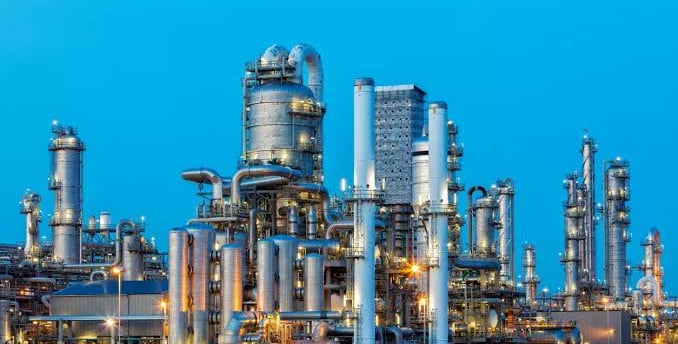Add your promotional text...
India Set to Expand Crude Oil Refining Capacity by 35-40 MT by FY30
Synopsis: India's oil marketing companies are set to expand refining capacity by 35-40 million tonnes by 2030, requiring ₹1.9-2.2 lakh crore in investment. However, demand for petroleum products is expected to moderate due to improvements in fuel efficiency, cleaner vehicle adoption, and the government's ethanol-blending targets. As India transitions toward cleaner energy, the refining sector faces challenges but remains strategically important. With solid financial returns and government support, the industry is well-positioned to adapt to future energy demands and ensure the nation's energy security.
COMMODITIES
By Ekta Mani
9/30/20244 min read


India’s oil marketing companies (OMCs) are poised to expand their crude oil refining capacity by 35-40 million tonnes (MT) by the end of fiscal 2030, bringing the country’s total installed refining base to approximately 295 MT, according to a recent report by Crisil Ratings. This ambitious expansion is projected to require a capital expenditure (capex) investment of around ₹1.9 to ₹2.2 lakh crore, with the majority of this growth coming from brownfield projects, which involve expanding existing facilities rather than building new ones from the ground up.
Slower Growth in Petroleum Product Demand
While India’s refining capacity is set to increase, the growth in overall petroleum product consumption is expected to moderate over the next few years. According to Crisil Ratings’ Senior Director, Anuj Sethi, petroleum product consumption is forecasted to register a compound annual growth rate (CAGR) of around 3% through fiscal 2030. This is a slower pace compared to previous years, primarily due to several factors affecting the demand for transport fuels, which make up a significant portion of the country’s petroleum consumption.
Key contributors to this slowdown include improvements in fuel economy, the increasing share of vehicle sales powered by alternative cleaner fuels, and the Indian government’s target to achieve 20% ethanol blending with gasoline. The push toward cleaner fuels and higher fuel efficiency standards is expected to have a noticeable impact on the demand for traditional petroleum products like diesel and gasoline.
Trends in India’s Refining Capacity and Domestic Consumption
Between fiscal 2014 and 2024, India increased its refining capacity by 42 MT, reaching a total of 257 MT, primarily to meet the rising domestic demand for petroleum products. During this period, domestic consumption registered a healthy CAGR of 4%, with transport fuels accounting for over half of the total consumption. Exports of refined petroleum products, however, remained relatively stable at around 60-65 MT per year during this period.
Of the total petroleum products consumed in India, transport fuels like diesel and gasoline are the largest contributors. Diesel, which represents a significant share of transport fuel consumption, is largely linked to commercial vehicle usage, accounting for about 75% of diesel demand. However, the rise of electric vehicles (EVs) and the adoption of natural gas-powered buses are expected to curb the growth in diesel demand, with Crisil predicting a modest CAGR of 2-2.5% for diesel over the next six years.
Impact of Alternative Fuels on Petrol Demand
In the case of petrol, internal combustion engine (ICE)-powered two-wheelers account for 75% of India’s petrol consumption, while the remainder is consumed by passenger vehicles. The adoption of alternative fuels, such as electric two-wheelers, as well as ongoing improvements in fuel efficiency, are likely to limit the growth of petrol demand in the coming years. These shifts underscore the broader trend toward reducing dependency on traditional fossil fuels in India’s transport sector.
Refiners’ Financial Performance Amid Oil Price Volatility
Despite fluctuations in global oil prices over the past decade, India’s oil refiners have managed to maintain relatively stable operating profits. Joanne Gonsalves, Associate Director at Crisil Ratings, noted that between fiscal 2016 and 2024, refiners earned rolling average returns of $9 to $11 per barrel, achieving a return on investments (ROI) in the range of 12-14%. These figures highlight the profitability and resilience of the refining sector, even amid periods of oil price volatility.
Gonsalves also emphasized the strategic importance of the refining sector to the Indian government, noting that the industry benefits from various forms of governmental support. This strategic importance, combined with the sector’s solid financial performance, is expected to help Indian refiners navigate future challenges, including the shift toward cleaner energy and changing global oil dynamics.
The Road Ahead for India’s Refining Sector
As India looks toward fiscal 2030, the country’s oil marketing companies are not only preparing for increased refining capacity but also bracing for a transformation in fuel consumption patterns. The moderate growth projected for petroleum product consumption reflects the growing influence of cleaner technologies, such as electric vehicles and ethanol blending, on the energy landscape.
India’s refining industry remains a critical component of the country’s energy infrastructure, but it is also one that is increasingly facing challenges from global trends toward sustainability and energy efficiency. The anticipated capital investments of ₹1.9 to ₹2.2 lakh crore for capacity expansions will be crucial for the sector to adapt to these evolving demands while ensuring the nation’s energy security.
In conclusion, India’s oil marketing companies are embarking on significant capacity expansions in the coming years, positioning themselves to meet future demand while also navigating shifts toward cleaner energy sources. The projected investment in brownfield projects underscores the importance of refining capacity in maintaining the country’s energy infrastructure.
However, the anticipated slowdown in petroleum product consumption, driven by factors like increased fuel efficiency and alternative fuel adoption, signals that the sector will need to evolve to meet the challenges of the future. Despite these challenges, the strategic importance of the sector and its demonstrated ability to deliver solid financial returns suggest that India’s oil marketing companies are well-positioned to continue playing a pivotal role in the nation’s energy landscape. As the sector moves forward, it will need to strike a balance between traditional refining operations and the integration of cleaner, more sustainable energy solutions.
